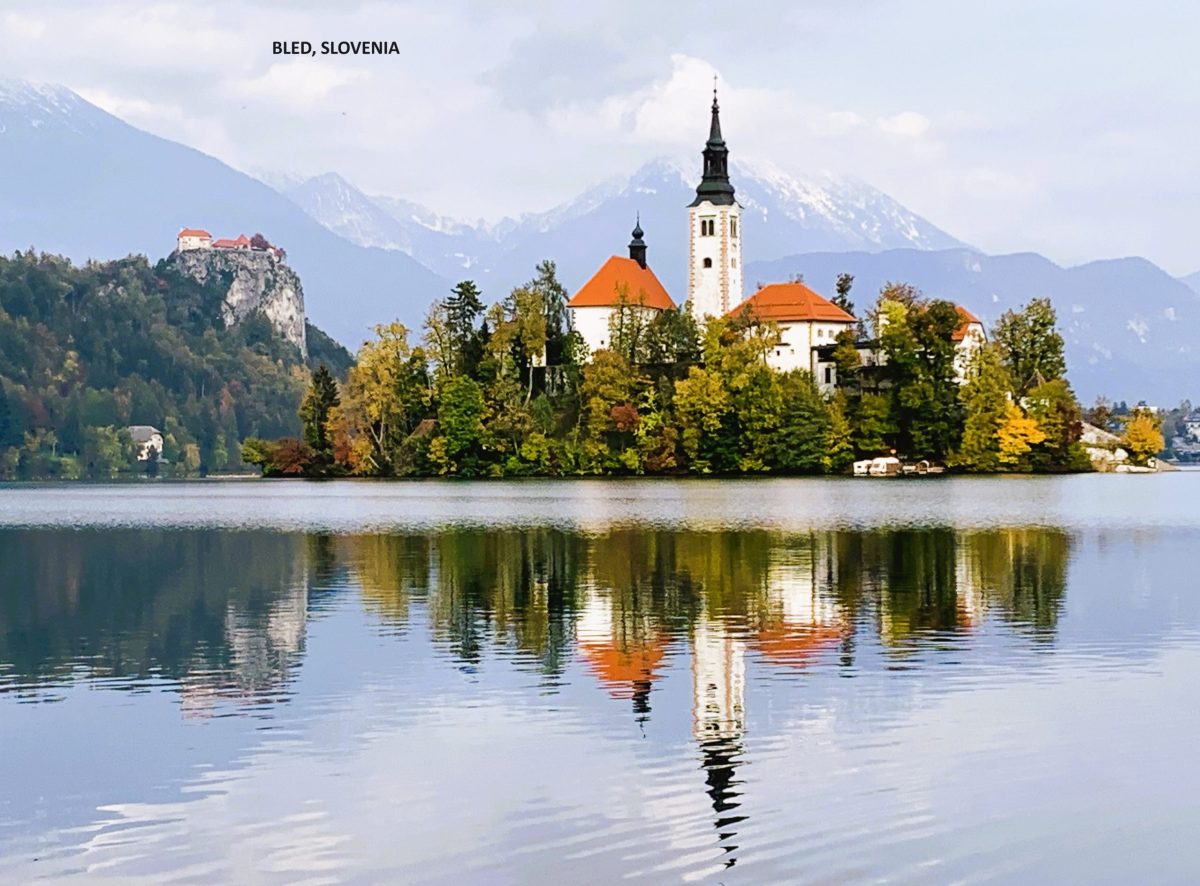I was last in Sitges some 20 years ago for a conference with my then employers (Amec) and, from what little I saw of the town at that time, I liked the place. It was always going to be interesting to see how much the town has changed over the years and during this visit I would get two chances to check the town out; the first would be during the day on my own and the second in the evening with Vanya and our two dogs.
The day started with me walking some 15 minutes or so past the golf course and through a very pleasant residential part of the town to one of Sitges’ beaches, the Platja de Terramar. There I joined the wide palm lined promenade (the Passeig Maritim) and headed east for a further 15 minutes to the 17th century Eglesia de Sant Bartomeu i Santa Tecla (that’s Catalan for the Church of Saint Bartholomew and Saint Tecla). This route took me past what is often called the Platja de Sitges but it is in fact a series of 7 different beaches (each separated by groins); the Platje de Terramar, the Platja de la Barra, the Riera Xica, L’Estanyol, the Bassa Rodona, la Ribera and finally the tiny Platja de la Fragata. There are three more beaches to the east of the church which lead all the way to the harbour (the Platja Sant Sebastia, the Platja dels Balmins and finally the Platja Aiguadolc) but I decided to leave these beaches to a later visit. For information only, I found out later that there are a few nudist beaches in Sitges and one of them is on the Platja dels Balmins.
The beaches I saw during the walk are all blue flag clean and mostly sandy. They are as good as any to be seen in this part of Spain and at this time of the year are mostly empty. The busier ones, complete with street hawkers selling fake designer handbags and trainers, are at the church end of the Passeig Maritim where most of the restaurant-bars and, of course, the old town are located. Given it is mid September, I was surprised at how busy the bars are but; perhaps I shouldn’t have been with Ryan Air currently flying into Girona from Belfast, Cork and Dublin for as little as £40 return. There were probably more Irish in Sitges during our visit than any other nationalty.
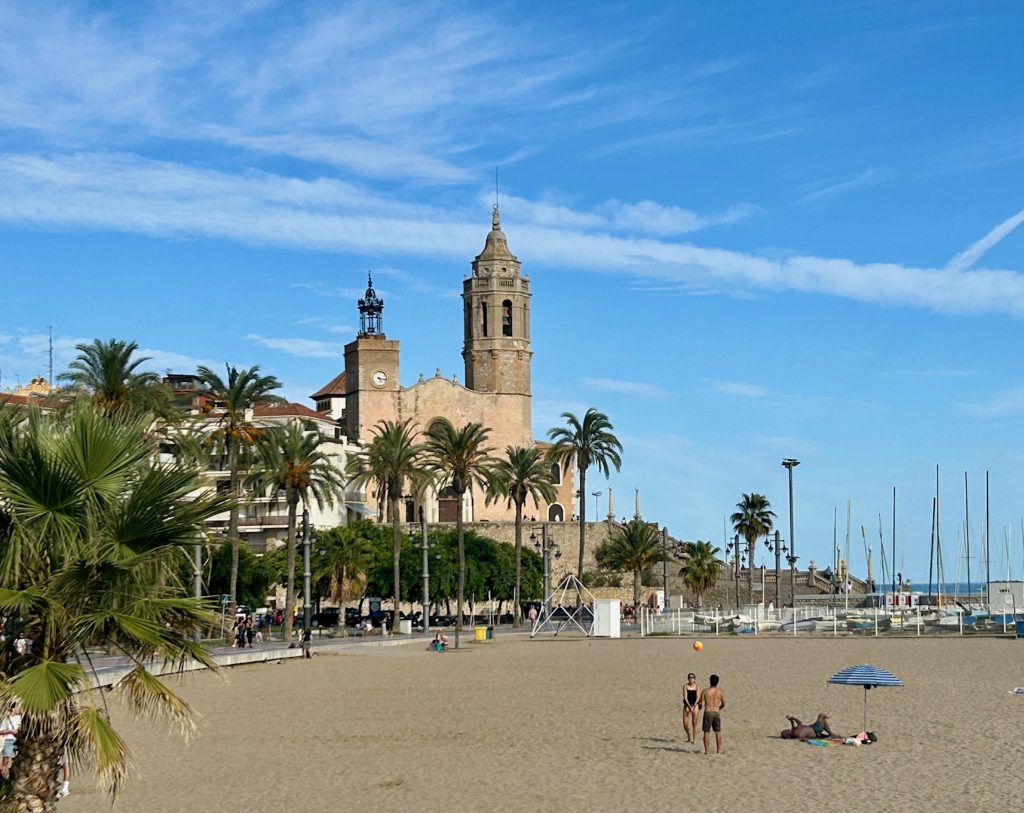
The Church of St Bartholomew and Saint Tecla is Sitges’ most recognisable landmark; so much so it is known locally as La Punta – the Point. The church was closed during my previous visit and it was the same again this time. It’s shame, if only because the views from any one of the bell tower or the clock tower will, I think, be exceptional. I read that the local museum used to run tours of the church which includes an ascent of the bell tower but I don’t know if that is still the case.
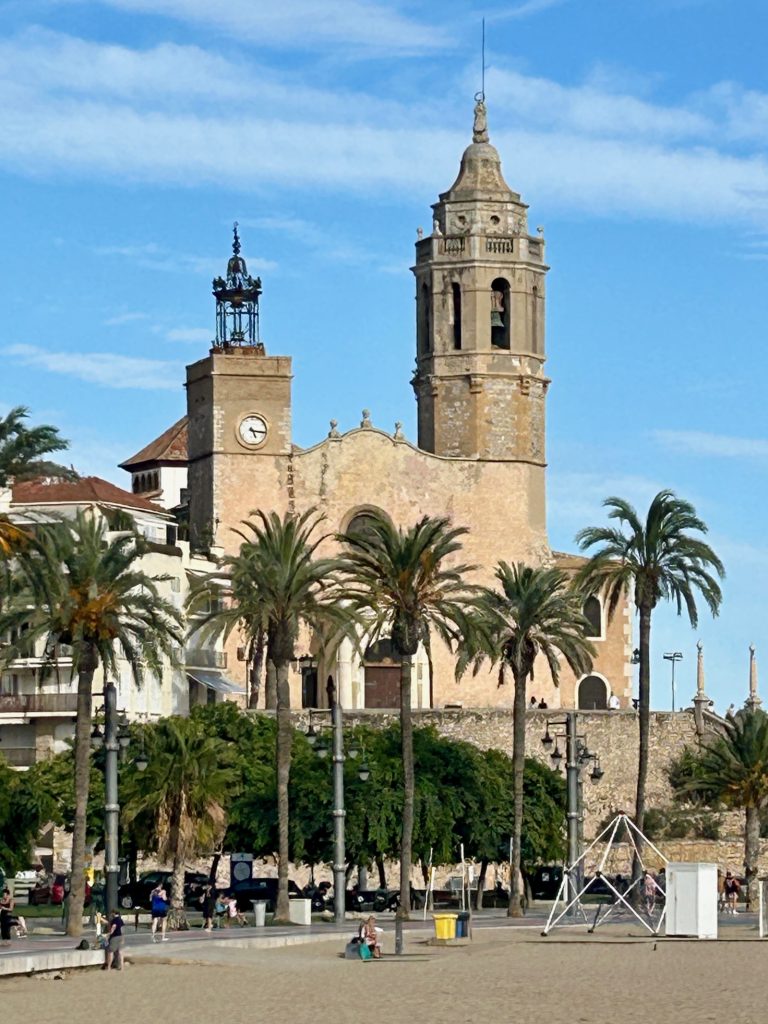
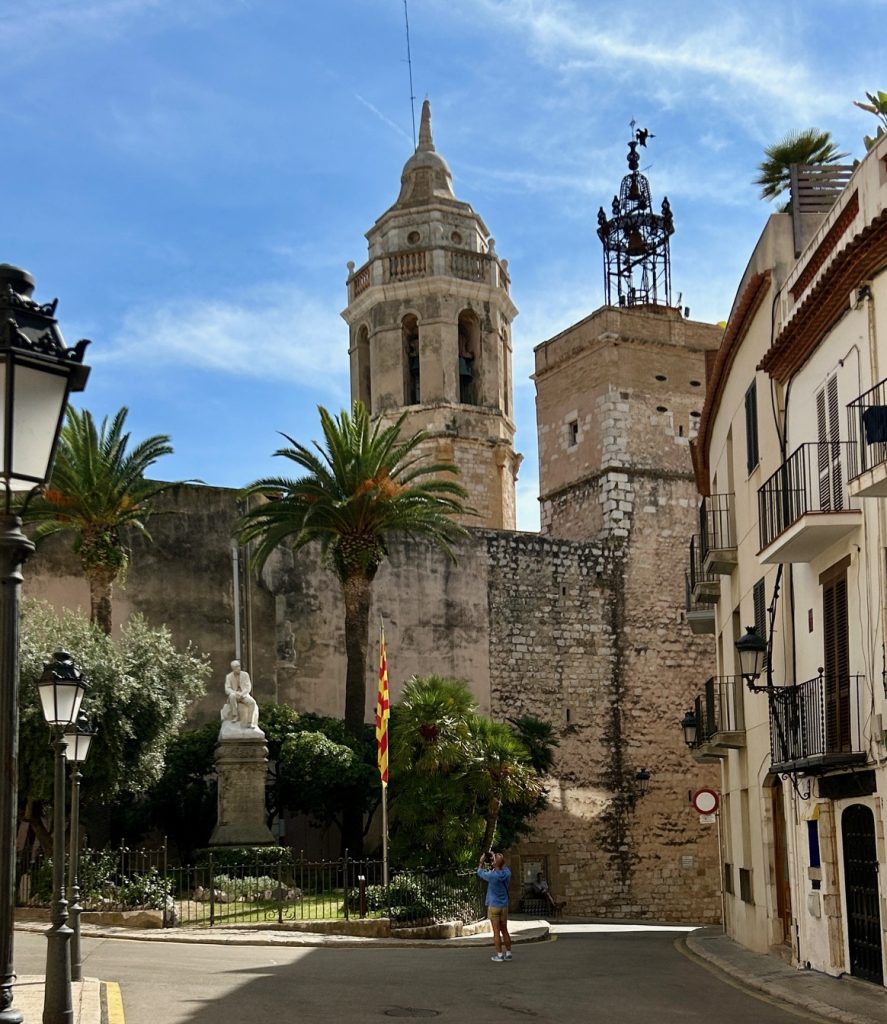
While the vistas from the nearby ‘Palau de Maricel’ (the Maricel Palace) don’t quite match those of the church, they do afford some fine views over the Mediterranean; especially from the rooftop terrace and cloisters. The ‘Palace’, by the way, is the ‘must see’ place in Sitges. Built between 1910 and 1918 by artist and engineer Miguel Utrillo at the behest of US tycoon Charles Deering (of the Combined Harvester Family), it was part of a complex which would become home to Deering and serve to showcase his growing art collection. It didn’t last. The two men fell out in 1921 over certain financial irregularities and Deering closed everything down and moved back to the United States. Much of the complex was subsequently dismantled and sold off piecemeal with the City of Sitges buying the current ‘Palace’ in 1954. Inside and outside it is quite spectacular…
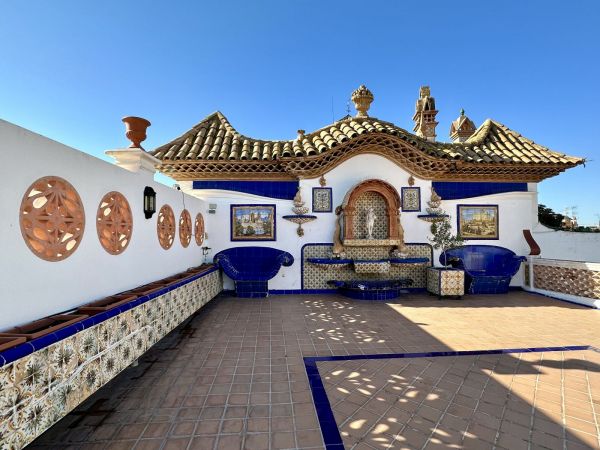
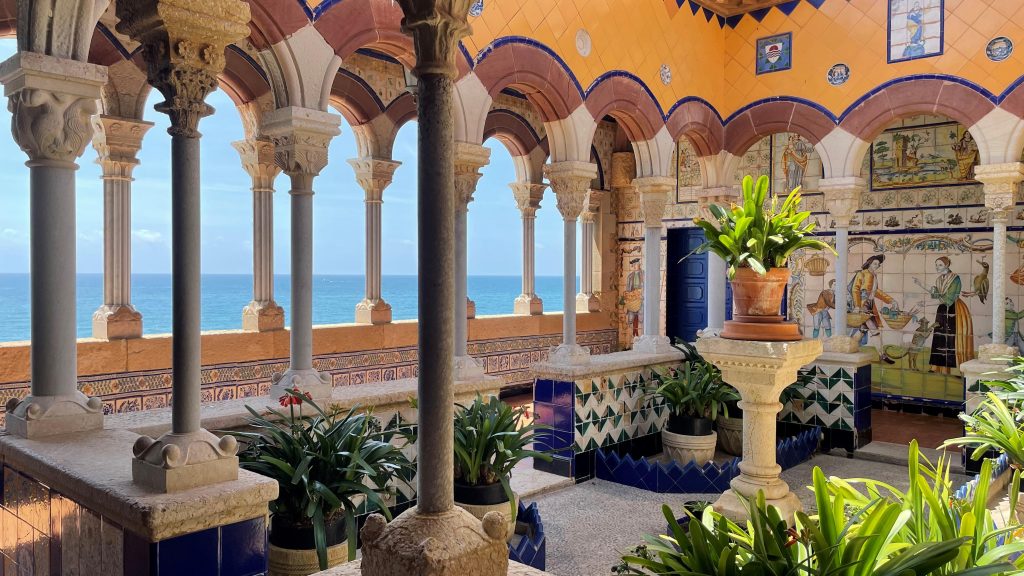
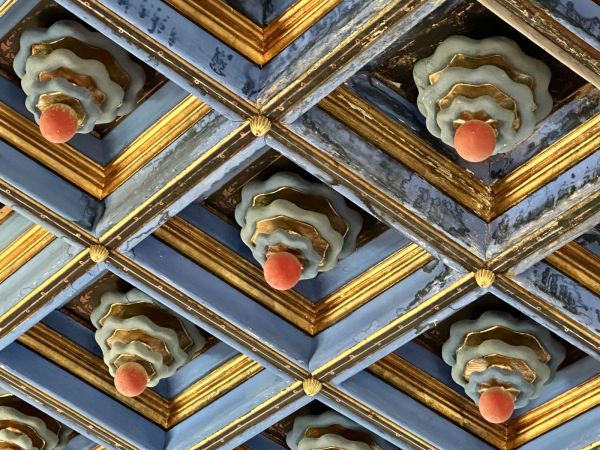
After exploring La Punta, I started back along the Promenade but only as far as the ‘A Facundo Bacardi’ monument (Bacardi being someone born in Sitges who emigrated to Cuba and then created the well known white rum which bears his name) and then turned deeper into the old town of Sitges by way of Carrer Primer de Maig. Sitges’ old town isn’t as large as many others (especially having regard to the size of the city – it has a population of about 30,000) but it is equally charming.

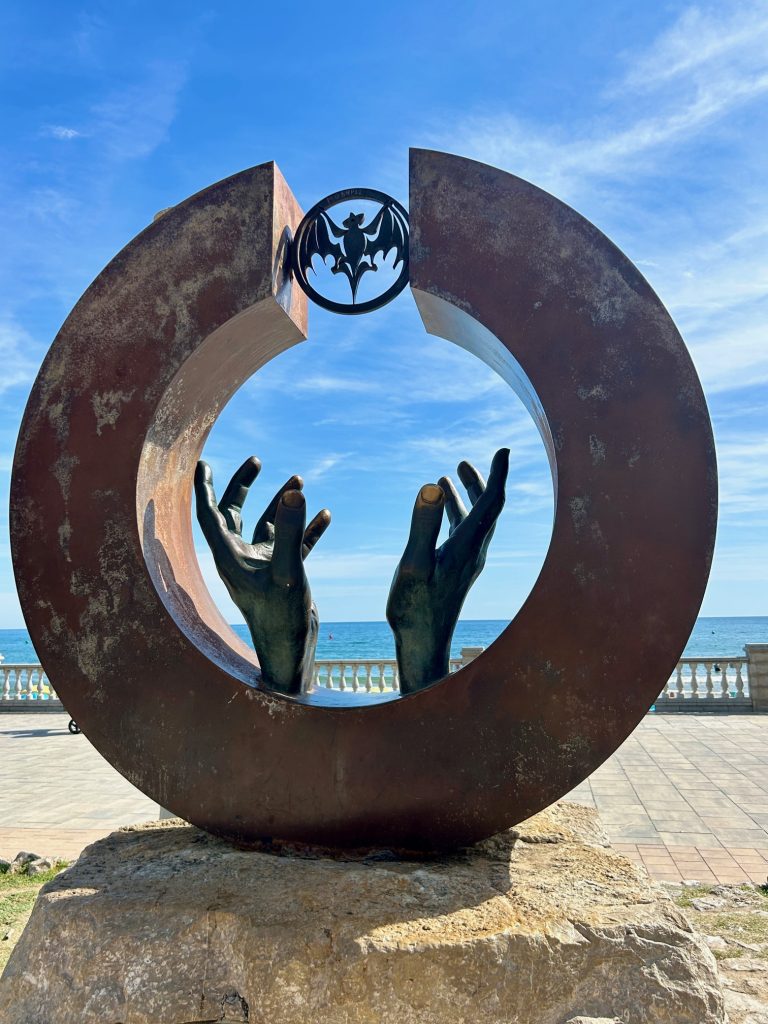
The wholly pedestrianised Carrer Primer de Maig de 1838, also known as Carrer del Pecat (Sin Street in English) is one of a handful of streets at the heart of Sitges’ nightlife. The street is not as bad as the sobriquet suggests (well, not before midnight anyway) and during the day it really is a most unassuming street that you could safely take the most prudish grandmother down.
Having said that, I’m uncomfortable with those hotels which openly declare they are open only to gay couples. Sitges has long been a truly cosmopolitan city where everyone is welcome irrespective of their gender or sexual proclivity and I recognise that the LGBTQ community has lent the city a great deal of spirit and colour but if this isn’t discrimination, it is certainly boorish behaviour and to be censured.
Rant over. Back to the visit. I wandered much of Sitges old town for a while longer and then stopped for a quick beer in one of the backstreet bars before making my way back along the Passeig Maritim to collect Vanya and our dogs for the evening sortie into the city.
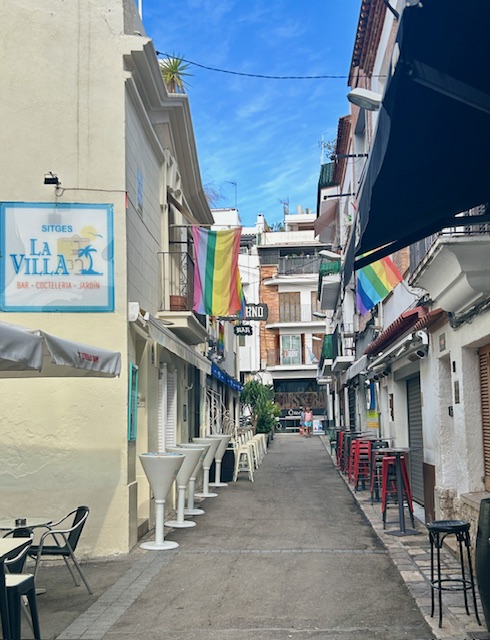
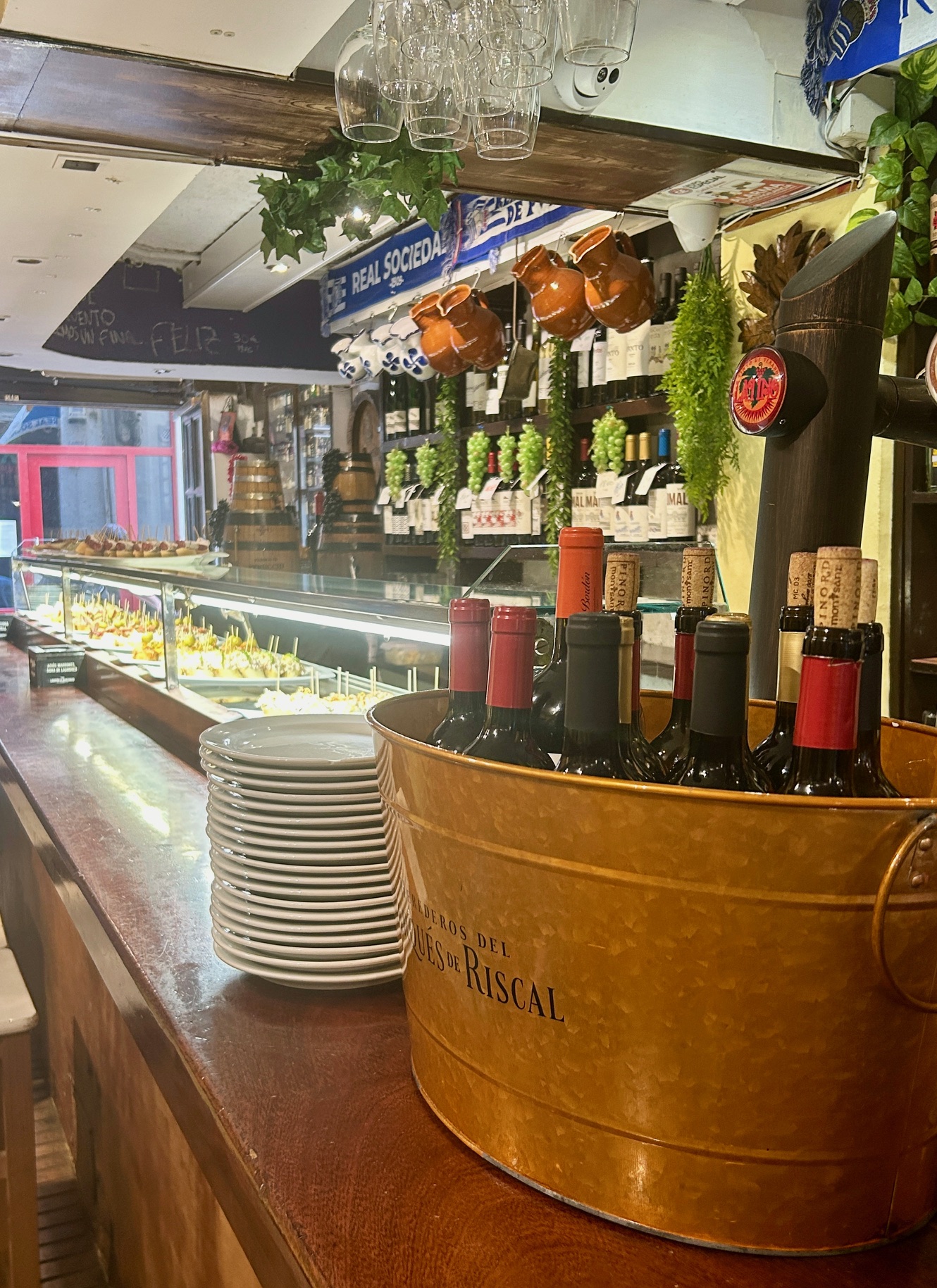
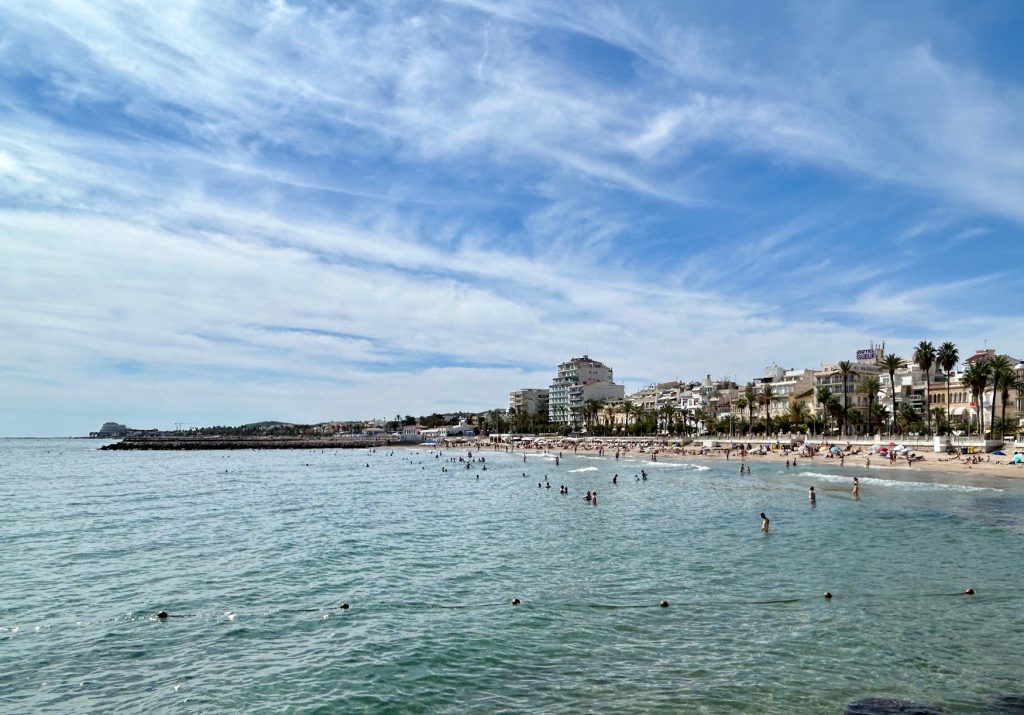
There are definitely two sides to Sitges. Day and night in the town are as different as chalk and cheese and, well, as different as day and night. The days, at least in the closed season, are mostly quiet, slow and relaxed. It is as much about lazing on the beach or strolling the promenade as anything. Yes, there is the odd juvenile boozer who seems to have confused Sitges with Ayia Napa but, fortunately, such types rarely have the capacity to last.
Then there’s nighttime. We stayed only until midnight but saw enough to recognise that the city is transformed at night. There’s a wide variety of bars and restaurants (with cocktail bars presiding) and there are also numerous nightclubs, most of which stay open well into the early hours of the morning. Of course the nightclubs are dominated by the gay community but, so far as I am aware, they are generally open to all and they are great fun.
For our part, Vanya and I were happy enough sitting on a terrace outside a bar in the old part of the city; enjoying a bottle of wine, people watching and soaking up the atmosphere of what is clearly a very vibrant city. We found a place to eat right in the centre where the Carrer Primer de Maig meets the Carrer del Marques Monttroig and is crossed by the Carrer de Joan Tarrida. I’d recognise it again by it’s colourful umbrellas and by the way the seats of all the chairs outside the different restaurants are pointed towards the centre of the crossroads This wholly pedestrianised area was a hive of activity all the time we were there and a fun place to be. We would have been quite happy sitting there eating our good (albeit expensive) tapas and watching the world go by but our evening was further enhanced by a young acrobatic troop of dancers who entertained us at the crossroads for over an hour.

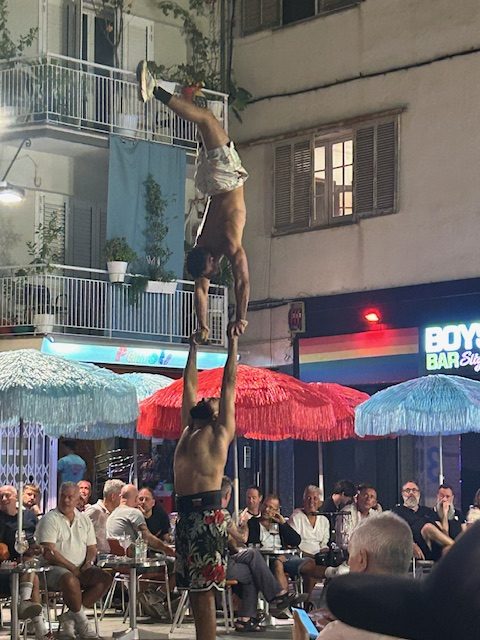
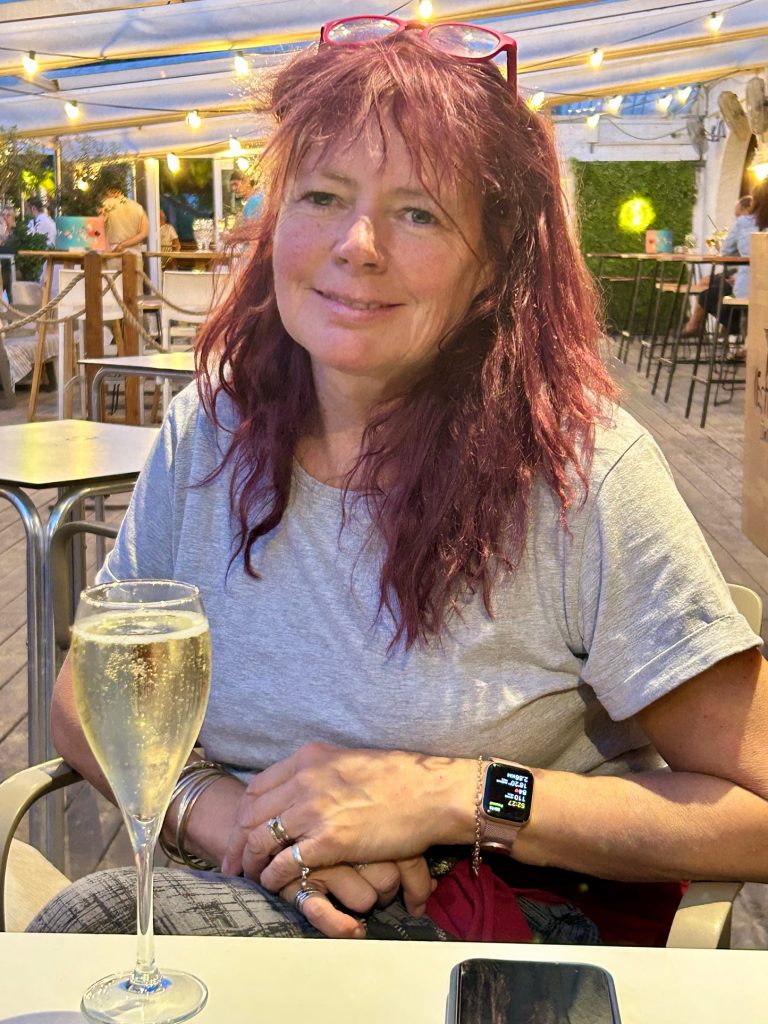
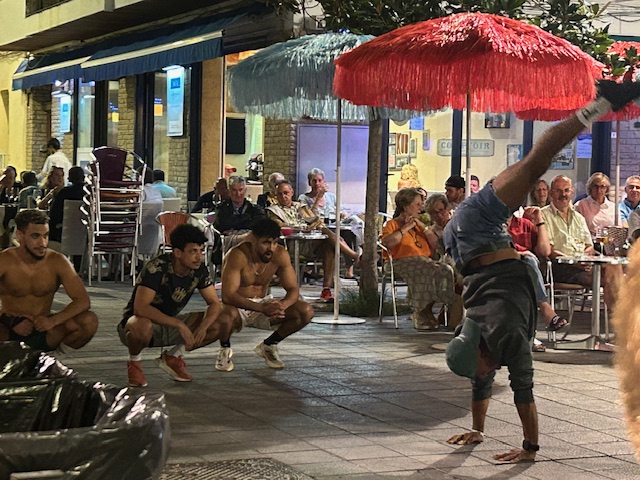
It strikes me there’s an open, accepting and more relaxed atmosphere about Sitges at night. It’s comfortable. I think perhaps the good humour of so many people intent on enjoying themselves has a healthy, positive effect on others. It’s nice to think so.
Of course it may be different during the early hours of the morning, once the nightclubs are in full sway. We were not going to find out this trip. We had our dogs with us and so could not take advantage of the nightclub scene even if we wanted too but; there was time enough for one last leisurely stroll around the quieter parts of the city and that last half hour wandering the silent empty places, away from the busy cheerful bars and clubs, was as enchanting as anything we had experienced in Sitges. A couple of the following photos perhaps reflect that?
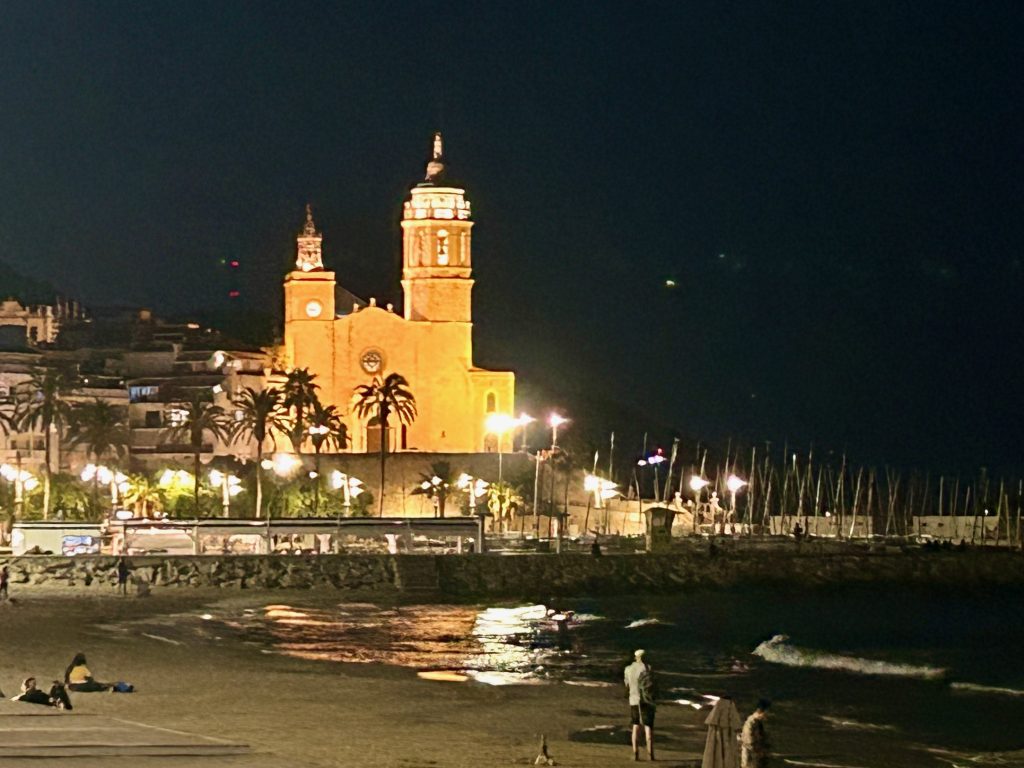
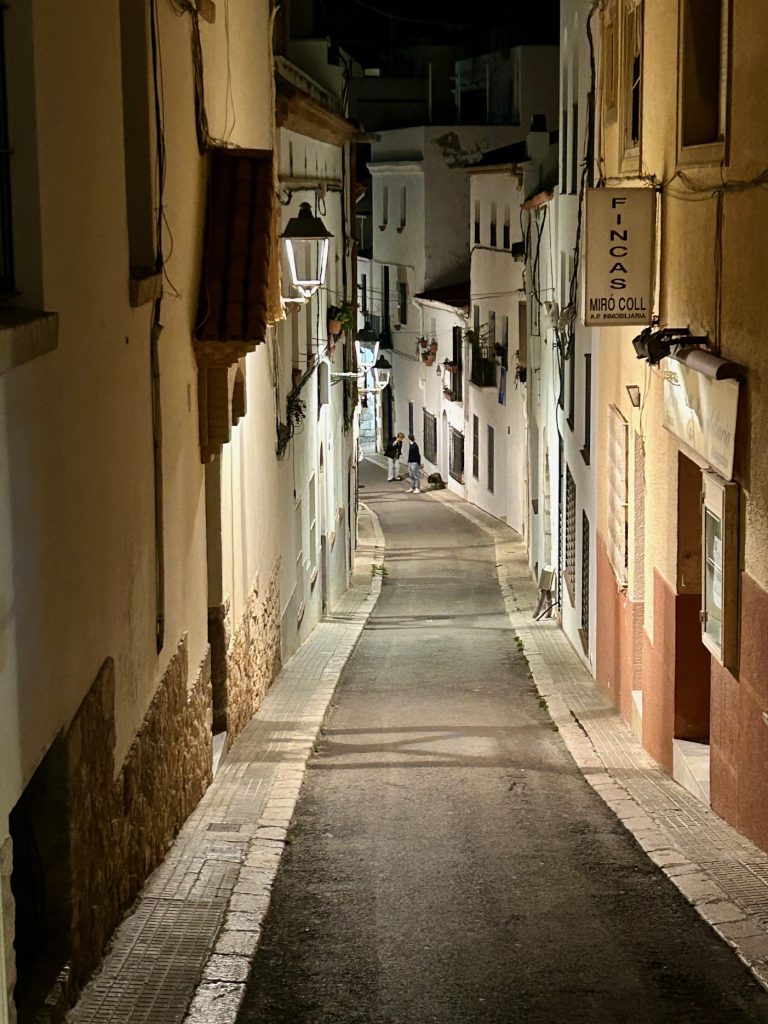

And there’s always time for Beanie pictures…
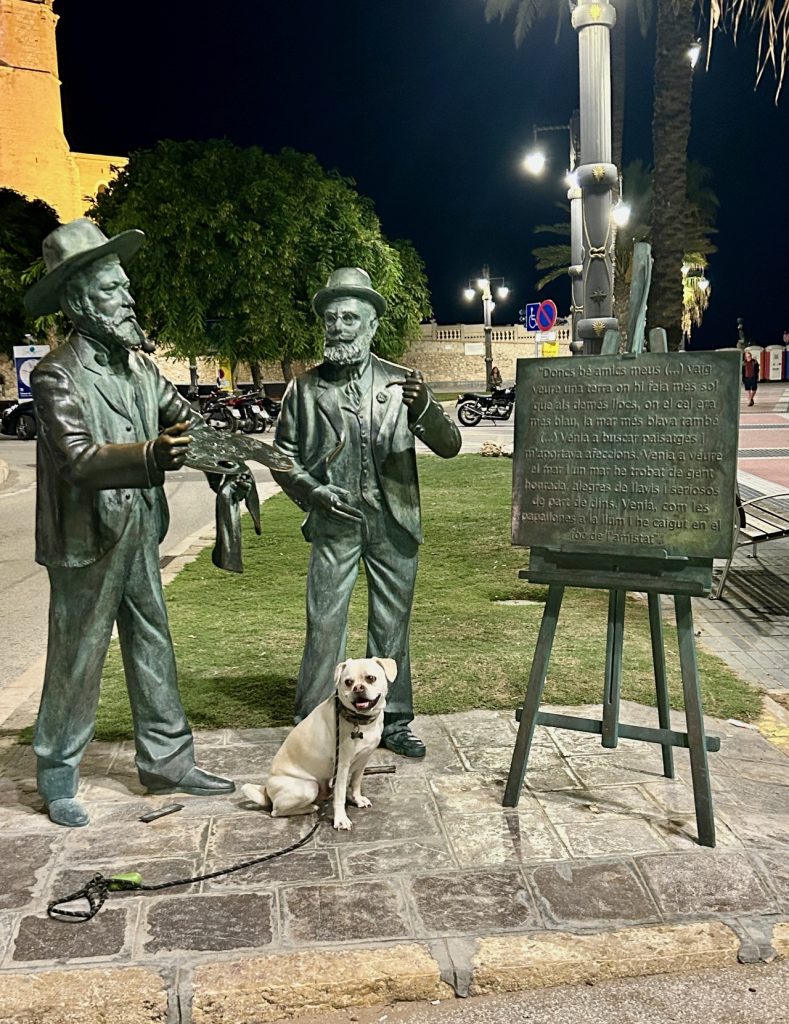

North in the morning but we’ll return to Sitges.

